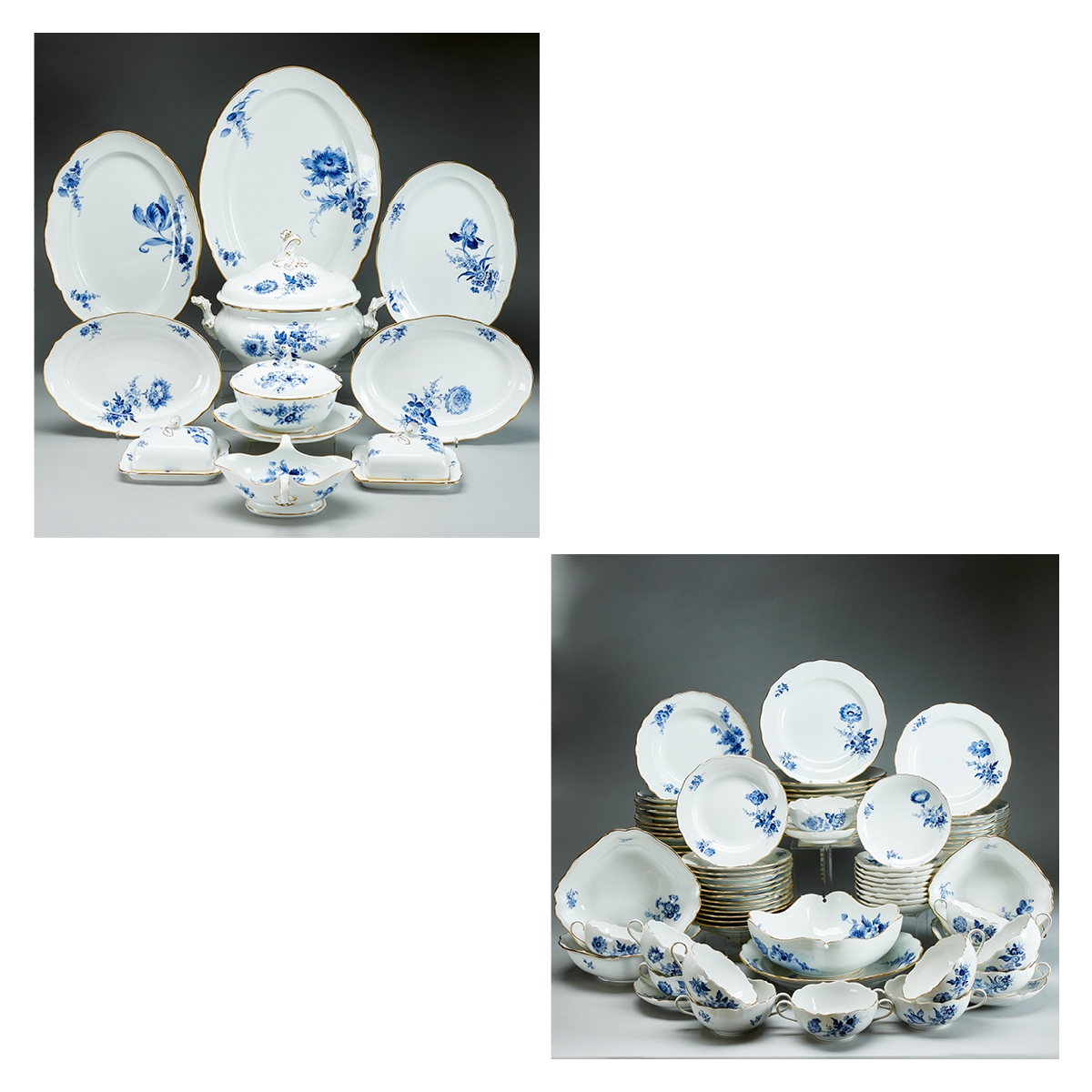An Illustrated Scroll depicting the Hussainabad Imambara Complex. India, Company School, Lucknow, c.1830-1850 Watercolour on paper in scroll form, 32 x 800cm (approx), backed with cloth, rolled around a wooden spindle, depicting various buildings within the Hussainabad Imambara complex, with identifications in top margin and Urdu in bottom; housed in a custom made perspex box. Remarkable Indian illustrated scroll, depicting various buildings within the Hussainabad Imambara complex, including private houses, caravanserai, various gateways, the mosque and mausolea, identification inscriptions above and below the painting in Urdu and English, various figures depicted in the foreground including native characters, elephants, oxen, rickshaws, as well as Europeans on horseback. The Great Hussainabad Imambara (also known as the Chhota Imambara), is a large and impressive monument in Lucknow, built by Muhammad ‘Ali Shah, the third Nawab of Avadh, in 1837. It contains the tombs of Muhammad ‘Ali Shah (part of the reason behind its original design) and those of other members of his family. A lithographed view of the impressive architecture was produced by Edmund Walker after David Scott Dodgson (who described the Imambara as “the architectural gem of Lucknow”) in 1860 (see P Godrej and P. Rohatgi, Scenic Splendours, India Through the Printed Image, London, 1989, pp.72, 78-78 and 150, pl. 15). As illustrated in the present scroll, the building housing Muhammad ‘Ali Shah’s tomb is flanked by two miniature versions of the Taj Mahal at Agra, one of which contains the tomb of Muhammad ‘Ali Shah’s daughter, and the other, her husband’s. A further Company School Illustration of The Great Imambara, by a Calcutta artist circa 1798-1804, is among a group of paintings in the India Office Library (Add.Or.1131-1146, see Archer 1972, pp.78-79, no.44xvi). Provenance: Ownership inscription of Lt. Col. J.L. Sleeman, Royal Sussex Regt. on the reverse of scroll. We believe the scroll was inherited from Sir William Henry Sleeman, (1788–1856) responsible for the eradication of the Thugee secret society in India. He was an army officer in the East India Company and administrator in India, and in 1848 was appointed by Dalhousie as the British Resident General at Lucknow and also a representative in the court of the Nawab. It was probably in this capacity that the scroll was either purchased or gifted to him. Due to ill health, Sleeman decided to make the voyage home to England in 1856 and presumably the Scroll travelled with him. Unfortunately, Sleeman died on the return home and was buried at sea, his former Residency was then subject to the Siege of Lucknow, part of the Indian Rebellion of 1857 and so the scroll seems to have had a lucky escape from certain destruction. See https://www.sothebys.com/en/auctions/ecatalogue/2013/arts-of-the-islamic-world-l13220/lot.105.html
An Illustrated Scroll depicting the Hussainabad Imambara Complex. India, Company School, Lucknow, c.1830-1850 Watercolour on paper in scroll form, 32 x 800cm (approx), backed with cloth, rolled around a wooden spindle, depicting various buildings within the Hussainabad Imambara complex, with identifications in top margin and Urdu in bottom; housed in a custom made perspex box. Remarkable Indian illustrated scroll, depicting various buildings within the Hussainabad Imambara complex, including private houses, caravanserai, various gateways, the mosque and mausolea, identification inscriptions above and below the painting in Urdu and English, various figures depicted in the foreground including native characters, elephants, oxen, rickshaws, as well as Europeans on horseback. The Great Hussainabad Imambara (also known as the Chhota Imambara), is a large and impressive monument in Lucknow, built by Muhammad ‘Ali Shah, the third Nawab of Avadh, in 1837. It contains the tombs of Muhammad ‘Ali Shah (part of the reason behind its original design) and those of other members of his family. A lithographed view of the impressive architecture was produced by Edmund Walker after David Scott Dodgson (who described the Imambara as “the architectural gem of Lucknow”) in 1860 (see P Godrej and P. Rohatgi, Scenic Splendours, India Through the Printed Image, London, 1989, pp.72, 78-78 and 150, pl. 15). As illustrated in the present scroll, the building housing Muhammad ‘Ali Shah’s tomb is flanked by two miniature versions of the Taj Mahal at Agra, one of which contains the tomb of Muhammad ‘Ali Shah’s daughter, and the other, her husband’s. A further Company School Illustration of The Great Imambara, by a Calcutta artist circa 1798-1804, is among a group of paintings in the India Office Library (Add.Or.1131-1146, see Archer 1972, pp.78-79, no.44xvi). Provenance: Ownership inscription of Lt. Col. J.L. Sleeman, Royal Sussex Regt. on the reverse of scroll. We believe the scroll was inherited from Sir William Henry Sleeman, (1788–1856) responsible for the eradication of the Thugee secret society in India. He was an army officer in the East India Company and administrator in India, and in 1848 was appointed by Dalhousie as the British Resident General at Lucknow and also a representative in the court of the Nawab. It was probably in this capacity that the scroll was either purchased or gifted to him. Due to ill health, Sleeman decided to make the voyage home to England in 1856 and presumably the Scroll travelled with him. Unfortunately, Sleeman died on the return home and was buried at sea, his former Residency was then subject to the Siege of Lucknow, part of the Indian Rebellion of 1857 and so the scroll seems to have had a lucky escape from certain destruction. See https://www.sothebys.com/en/auctions/ecatalogue/2013/arts-of-the-islamic-world-l13220/lot.105.html














Testen Sie LotSearch und seine Premium-Features 7 Tage - ohne Kosten!
Lassen Sie sich automatisch über neue Objekte in kommenden Auktionen benachrichtigen.
Suchauftrag anlegen